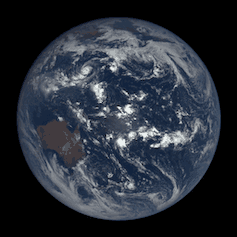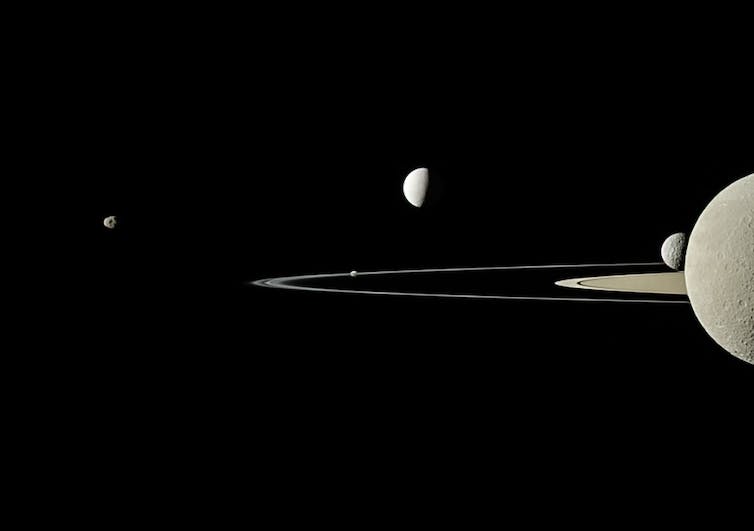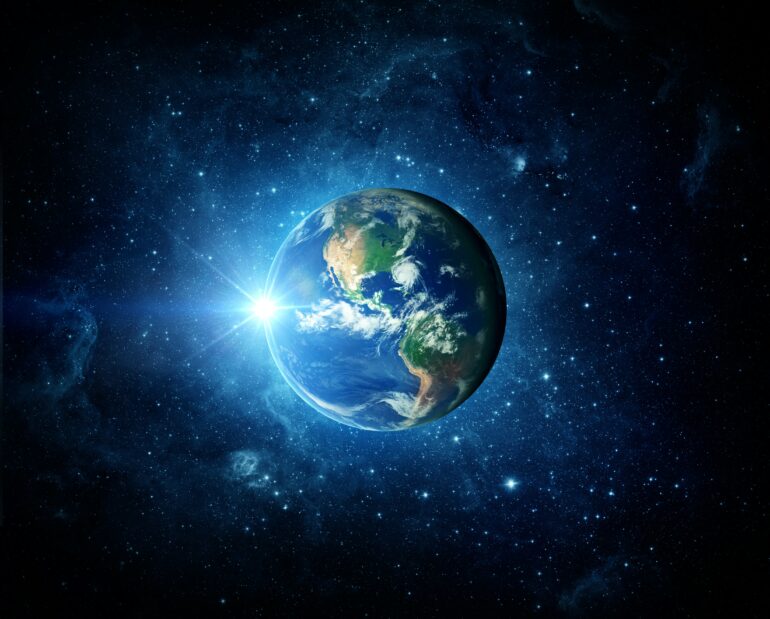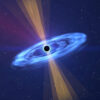
Curious Kids is a series for children of all ages. If you have a question you’d like an expert to answer, send it to [email protected].
Why does the Earth spin? Sara H., age 5, New Paltz, New York
A globe was the first thing I ever bought with my own money. I was maybe 5 years old, and I was really excited to take it home. As I quickly discovered, you can spin it in the direction that the earth actually spins.
There’s an imaginary line between the North Pole and the South Pole. We call it the rotation axis. For the Earth, the rotation axis points toward a bright star, Polaris, which is visible on clear nights in the Northern Hemisphere.

Satellite images over one day show Earth rotating on its axis.
NASA/EPIC, edit by Tdadamemd
If you want to know which way to spin your globe, make the goofy “thumbs-up” sign with your right hand. Imagine your thumb is the Earth’s rotation axis, pointing to the North Pole. Your fingers will naturally curl around your hand, and the direction those fingers are pointing is the way Earth spins.
Every 24 hours, the Earth makes a full rotation, spinning west to east, which is why the sun rises in the east and sets in the west and the stars at night appear to move across the sky.
To understand why this happens, let’s see what we can learn from other bodies in space.
Everything spins
The Sun also spins. In fact, it spins in the same direction the Earth does.
Not only that, the Earth orbits the Sun in the same direction, as do all the other planets and more than a million asteroids and dwarf planets.
Most are spinning in the same direction, too. Jupiter and Saturn spin quite a bit faster than Earth, taking only about 10 hours to rotate. Saturn’s spin is a little bit tilted, so we get to see changing views of its rings over time.

The Cassini spacecraft took this image showing part of Saturn’s rings, made of billions of small chunks of ice and rock, and five of its moons.
NASA/JPL-Caltech/Space Science Institute
There are two funky exceptions: Uranus appears to have been tipped over on its side. Nobody knows exactly how. Maybe it collided with another planet. Venus is also odd – it spins backward. We don’t know for sure whether it formed that way or got knocked over. Most scientists now think its spin has been reversed over time by tidal forces involving the Sun and Venus’ thick atmosphere.
All that leads astronomers like me to wonder: Is there something about how the solar system formed that kind of “baked in” that direction of spin?
Birth of a star
For more clues, we can look at a young star, one that is just forming its system of planets.
A famous one is called Beta Pictoris. It is surrounded by a thin disk of dust, gas and little bits called planetesimals; they range in size from a grain of sand to rocks maybe up to the size of a…



